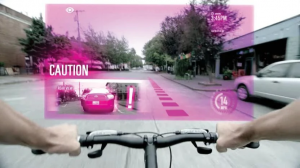One of the hot topic phrases of 2021 has been immersive technology, more specifically, augmented reality (AR). A main contributing factor to the rise of interest and implementation from digital marketers has been the opportunities that 5G creates for the augmented reality industry.
In the Wax Marketing Blog’s first installment of the 5G Experience series, we touched on the possibilities that 5G technology presents to the augmented reality industry. In this third and final installment of the series, we will be taking a deep dive into augmented reality and its future in the modern marketing world.
What Does 5G Really Do To Improve Augmented Reality?
Every marketer wants to implement AR into their campaigns and services in some way. However, with the current speed that 4G offers, network latency becomes the biggest roadblock preventing AR from reaching its full potential.
“We have a latency constraint and removing it is one less barrier from making AR more consumable and adoptable,” said Jeff Geheb, CTO at the digital marketing ad agency VML.
With 5G removing latency altogether, augmented reality will have the power and speed it needs to reach its full potential.
Preparations for 5G Are Already in Motion Across the World
It’s fun to talk about hypotheticals and imagining what a world with full 5G technology will bring, but what are leaders doing now to prepare? A little over a year ago, the European Union released a 5G action plan that included uninterrupted 5G coverage for major roads and railways by 2025.
In the United States, investments in immersive technology have increased substantially over the past 5 years. In 2017, US companies set a record of investing more than $3 billion in augmented and virtual reality. In 2021, that number is expected to be $215 billion.
The Future of Digital Marketing with Augmented Reality
T-Mobile points to the benefits of investing time and money into the preparation of 5G technology, noting how it could be instrumental in developing virtual heads-up displays.

This is comparable to Google Live-View, a first of its kind augmented reality GPS and opens up big opportunities for marketing companies. Virtual heads-up displays like the example above would allow digital marketers to focus on demographic mapping and local business advertising through Google My Business and Google Maps. Imagine, you are a digital marketer trying to increase customer traffic to a local business and you are able to upload a company’s information, ratings, and turn-by-turn directions into this heads-up display.
When it’s all said and done, 5G technology will transform how we access online content. No longer will augmented reality be limited to 2D graphical overlays within AR-glasses. It will instead appear on surfaces like car dashboards and your favorite retail walls as 3D overlays that consumers can interact with.
Shape Up or Ship Out
There are currently hundreds of billions of dollars being invested into AR and with the promise of 5G technology, action plans are currently being implemented across the world. Five years from now, we will not be living in the same digital marketing age. Digital marketing companies that make this adjustment early on and accept the new era of technology will succeed. Those who don’t will get left behind extremely quickly.
